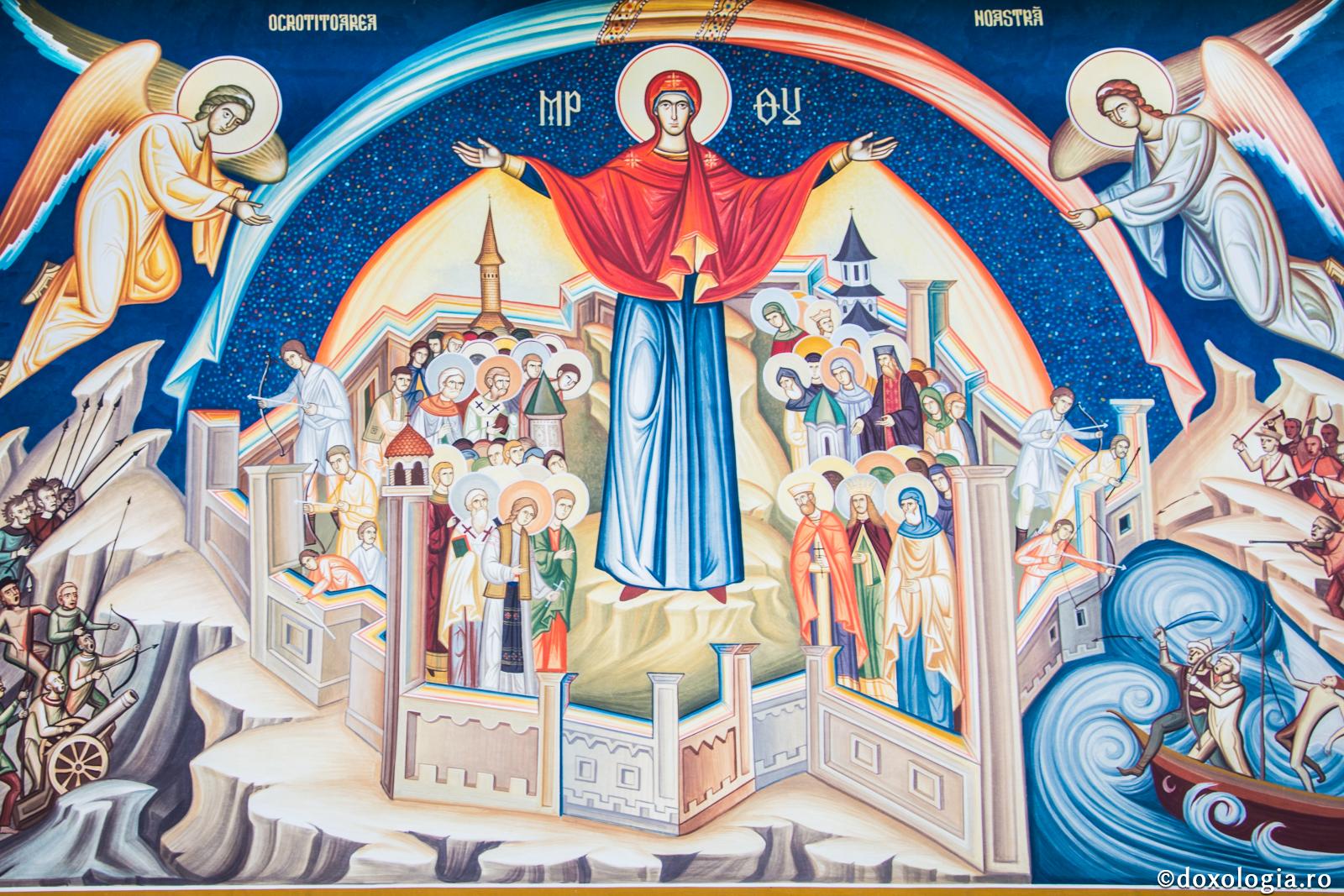The Protection of the Mother of God is the celebration of the Church in memory of the appearance of the Mother of God in the church of Vlaherne. On October 1, 911, this church was observed in order to save the fortress that was besieged. At four o’clock in the morning, the Mother of God appeared before the people, standing in the air and praying with tears. The Holy Cloak was held in the hands above the heads of the believers. There were apostles, saints, and martyrs around her.
Saint Andrew the Fool for Christ said to his beloved disciple, Epiphany: “Do you see, brother, the Empress and Lady of all as she prays for the whole world?” And Epiphany said, “I see it, Father, and I am delighted.”
This is the event that the Church today preserves to remind us that by the need and prayer we can receive, in the hardships of our life, the unceasing help of the Mother of God.
 How do we report, modern Orthodox Christians, to the Mother of God, and how do we honor it both in Christological and Devotional terms?
How do we report, modern Orthodox Christians, to the Mother of God, and how do we honor it both in Christological and Devotional terms?
First of all, we must emphasize the central character of Mary’s place in the Mystery of the Incarnation, so rooted in the liturgical and devotional experience of Orthodox Christians. The hymns and icons that adorn each day of Orthodox feast reinforce the idea that Mary is a meeting place between the divine and the created beings. God entered the world as the Incarnate Son through the consent and cooperation of a girl; He also took human flesh – or human beings – only out of it. Mary thus plays an important role in this mystery, both metaphysically and morally: she gives Christ His human nature and willingly accepts her role in this mystery.
When Orthodox Christians pray to the Mother of God in the context of liturgical worship or in particular, they are guided by the tradition of using words that constantly recall the Christological foundation of such worship. As we have seen, most prayers or hymns, such as the theotokia shorts that are attached to each song in the canons of the Matins, allude to the role of Mary in the Incarnation, even as they allow Christians to pray for her intercession and help. Sometimes the liturgical texts seem to fade the border between Mary as a protector of Christians or as a mediator of this protection; in strictly theological terms, of course, such help can only come from God Himself.
An idiom in the Fourth Voice, sung at the feast of the 15th of August (the Feast of the Assumption of the Virgin), may give rise to some confusion: On this, as the Mother of God, praising her, we cry and say, “Deliver us we who testify to you, to God-giving, to all danger, and deliver our souls to our needs. ” Although such passages – as well as the repeated prayer “Most Holy Mother of God, save us!” – seem to attribute all the help and defense of the Mother of God, they must be read along with the rest of the prayers in the Orthodox cultic treasure. Most liturgical texts emphasize, as we have seen, the Christological role that allows Mary to act as a mediator between God and mankind. In almost every case, it does not take the place of the Son as the chief mediator between men and God; rather, it is, like angels and saints, an approachable character in the heavenly realm that allows believers to draw closer to the Savior.
